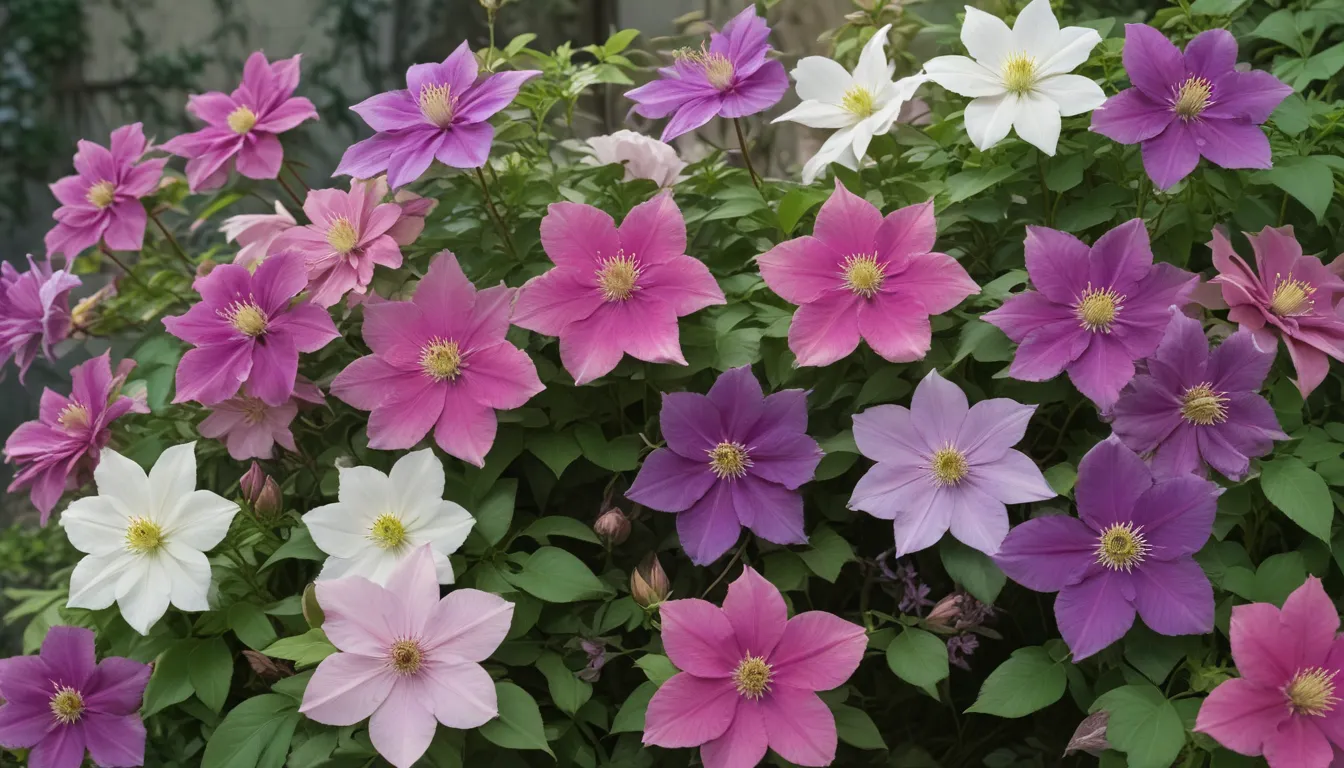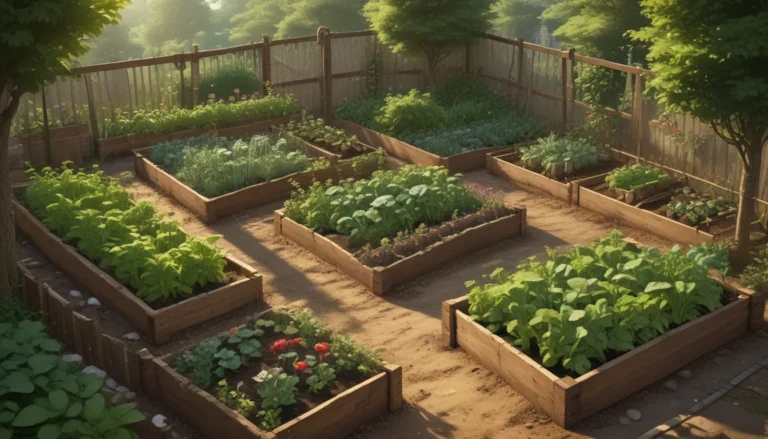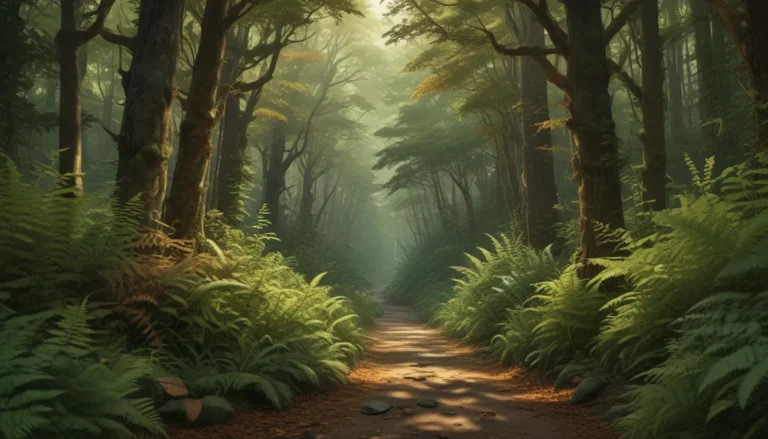Top 27 Cold Hardy Clematis Varieties for Zone 3 and Zone 4: A Comprehensive Guide

Are you dreaming of lush vines with vibrant flowers, splendid colors, and an easy-going nature, but are challenged by a climate with short summers and harsh winters? Look no further than the enchanting world of clematis. These vigorous climbers are a fantastic way to bring color and texture to your garden, even in regions with cold temperatures and brief growing seasons.
Growing clematis successfully in cold areas like USDA Hardiness Zones 3-4 requires selecting the right plant. Not all clematis can withstand sub-zero temperatures, but fortunately, there are numerous species and cultivars that are hardy enough to not just survive but thrive in these challenging conditions.
If you’re facing the hurdle of short summers and long, cold winters, continue reading to discover our top picks of the best cold-hardy clematis varieties for Zones 3 and 4.
Cold Hardy Clematis Varieties for Zone 3 and Zone 4
Group 1: Cold Hardy Cultivars
Group 1 offers a diverse selection of clematis that are well-suited for temperatures down to Zone 3. The Atragene group within Group 1 features small-flowered, early blooming types that are exceptionally hardy and undemanding. These plants require little to no pruning, making them easy to maintain and ideal for cold climates.
The Atragene group includes species such as Clematis alpina, C. koreana, and C. macropetala, along with their hybrids. Native to mountainous regions, these plants produce charming bell or lantern-shaped flowers in various shades of blue, mauve, pink, purple, red, white, and yellow.
- Pamela Jackman: A vigorous climber with bell-shaped, deep blue to purple flowers.
- Jacqueline Du Pre: Blooms in late spring with small pink to mauve flowers.
- Constance: Drips with nodding, bell-shaped dusty pink blooms.
- Bluebird: Delights with lavender-blue flowers and cream-to-lime-green stamens.
- Maidwell Hall: Renowned for frilly, semi-double lavender-blue flowers.
- Rosie O’Grady: Features rose pink petals with wavy edges and pale yellow stamens.
- White Swan: Displays dainty, pure white bell-shaped flowers.
Group 2: Mid to Late Blooming Varieties
Group 2 cultivars bloom vigorously in spring and often produce a second lighter flush of flowers during summer. These plants require light spring pruning for maintenance and typically underperform in very cold zones.
- Multi Blue: Dramatic double flowers in deep blue to purple with pale center bars.
- Bees’ Jubilee: Showy two-tone flowers of creamy pink with a deep cherry stripe.
- Blue Ravine: Cornflower to lilac blooms with a delightful fragrance.
- Capitaine Thuilleaux: Pale pink flowers with rich strawberry center bars and wavy petal edges.
- Duchess of Edinburgh: Luminous, fully-double flowers of white to blush pink.
- Fireworks: Eye-catching bi-colored flowers with ruffled lilac petals and cerise central bars.
- Henryi: Ivory flowers with pale mauve edges, perfect for espaliers.
- Moonlight: Cream-colored, highly fragrant flowers that bloom in late spring.
- Nelly Moser: Profuse display of bicolor starburst flowers.
- Ivan Olsson: Stately flowers in pale mauve and white.
Group 3: Late Blooming Varieties
Group 3 varieties are the latest to bloom and produce a single flush of flowers with a long season extending from early summer to early autumn. They require a single hard pruning in late winter for maintenance.
- Comtesse de Bouchaud: Masses of pretty shell pink to light mauve flowers.
- Ernest Markham: Stunning magenta or red flowers with cream filaments.
- Etoile Violette: Deep purple flowers with blond stamens.
- Viola: Large, violet petals that open to reveal royal purple blooms.
- Rouge Cardinal: Showy flowers of cardinal red with gold filaments.
- Duchess of Albany: Charming, tulip-shaped buds in coral pink.
Small-flowered Varieties in Group 3
- Gravetye Beauty: Distinctive narrow petals in rich ruby red.
- Kermesina: Rich magenta flowers with a rounded appearance.
- Margo Koster: Irregular coral pink flowers with pale center bars.
- Purpurea Plena Elegans: Fluffy double flowers of dusty pink.
Conclusion
With a diverse selection of cold-hardy clematis varieties available for Zone 3 and Zone 4, there’s no need to compromise on beauty in your garden. These remarkable climbers not only survive the harsh winters but thrive, adding a splash of color and elegance to your outdoor space.
So, are you ready to plant some of these cold-hardy clematis in your garden? With their resilience, beauty, and easy maintenance, they are the ideal solution for challenging climates. Drop us a note in the comments if you have any questions or want to share your favorite cold-hardy clematis varieties for frigid winters.
For more comprehensive clematis guides and tips on growing and caring for these stunning vines, be sure to check out our other resources.
Remember, with the right selection of cold-hardy clematis varieties, you can transform your garden into a colorful, lush paradise, even in the face of harsh winter conditions.
Keywords: cold-hardy clematis, Zone 3, Zone 4, climbers, garden, winter, flowering plants, USDA Hardiness Zones, gardening.





